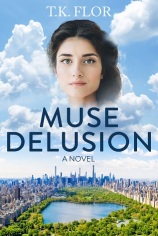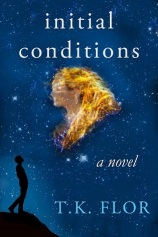“Remember that you are writing a novel, not a research paper. The story always comes first.”
On writing, by Stephen King
Okay, the story comes first, but let’s assume that adding some science to the plot can benefit the story. The question is, who is going to be interested in reading about science in a work of fiction?
When I was writing a novel with a physicist for a protagonist, I hardly thought about a target audience. I wanted my characters to spring to life as human beings, with wants, needs and emotions, and I didn’t care whether they dumped science-related information. I wrote what I wanted to read (but could not find elsewhere), without aspiring to educate anyone. Penning a novel allowed me to pick and choose, and skip the boring material necessary for a more rigorous presentation. Embracing that freedom, the story amassed, inadvertently but not surprisingly, big chunks of physics that I deemed fascinating.
For the sake of brevity, fast forward a few years and go straight ahead to a reality check I had when I asked strangers to read the manuscript. To those who asked about the genre, I said that it’s a contemporary mainstream fiction with some physics. A fiction with physics? Almost automatically it was taken for science fiction.
“Science fiction is a genre of fiction dealing with imaginative content such as futuristic settings, futuristic science and technology, space travel, time travel, faster than light travel, parallel universes and extraterrestrial life.” (Wikipedia).
I could call my novel, set in 1999, anything I wanted, but it’s definitely not science fiction. So, to what genre does it belong? And how much science can be entwined into a novel without ruining the storyline?
Books like Arthur Hailey’s “Strong Medicine” and Allegra Goodman’s “Intuition” show that fiction writers had successfully tackled realistic science in their novels. But neither of these books concerned physics. What I needed were examples of novels with physics, as well as information about relevant genres. Here is what I found so far.
If the exact nature of the science is not important, then it can be treated as a MacGuffin (a narrative device used to catch the audience’s attention and maintain suspense, but whose exact nature has fairly little influence over the storyline). Einstein’s unified field theory in Mark Alpert’s “Final Theory” is a good example of a MacGuffin. Even though Einstein never completed such a theory, it hardly mattered while reading this fast-paced thriller. The author could have substituted Einstein’s final theory with something else that would lead to a development of a weapon of mass destruction, and it wouldn’t significantly change the story.
When a novel is set in a real laboratory, and it realistically portrays science and scientists it is categorized as “Lab lit”. According to Wikipedia: “Lab-lit was relatively rare throughout most of the twentieth century, but began receiving attention in the cultural pages of science magazines during the first decade of the 21st century and has been championed by such scientist novelists such as Carl Djerassi, Ann Lingard and Jennifer Rohn.”
A New York Times article, titled In Lab Lit, Fiction Meets Science of the Real World, explains more about lab lit. In it, Katherine Bouton writes:
“Flight Behavior” fits neatly into a genre of serious fiction with a snappy new name: lab lit. I had never heard of it until I started browsing the Web for other novels about science; within minutes I came upon the webzine LabLit.com, which has “Lab Lit Lists” for dozens of novels, films, plays and TV shows.
The Web site’s editor is Jennifer L. Rohn, a cell biologist at University College London and a novelist herself. The list is a work in progress, and anyone can contribute a title. Lab lit is not science fiction, and in my opinion it’s not historical fiction about actual scientists (though some fictionalized biographies do appear on the list). Instead, in the website’s words, it “depicts realistic scientists as central characters and portrays fairly realistic scientific practice or concepts, typically taking place in a realistic — as opposed to speculative or future — world.
The article lists an extensive number of novels as examples of that category. The blog “Fiction about Science” adds a more recent example relevant to physics – Pippa Goldshmidt’s debut novel “The Falling Sky”.
So there is a niche for a contemporary novel with a scientist protagonist. However, I couldn’t find “lab lit” in Amazon’s categories. Among the subjects in The BISAC Subject Headings, 2014 Edition, I saw “medical” sub-subject both in “FICTION” and in “FICTION/Thrillers”, and also “Genetic Engineering” and “Hard Science Fiction” in “FICTION/Science Fiction”. Novels authored by unknown writers, set in branches of science that don’t fit into those subjects, are unlikely to pop up in front of a potential reader who is browsing the virtual shelves of “contemporary fiction”.
Indie writers are expected to use out-of-the box marketing.
Maybe I should start the story in the future, then use time-traveling as a MacGuffin, to go back to the turn of the third millennium…




I think there’s quite of few of us now writing novels – thrillers, mysteries, literary – that just happen to have a scientist, functioning in the realm of reality, as the protagonist. My heroine Sara Almquist is an epidemiologist and has found clues to stem a flu epidemic and identify a drug czar in COMING FLU, offer solutions to public health problems in Bolivia and track a drug czar in IGNORE THE PAIN, and arrange scientific exchanges between the US and Cuba and convict a drug czar in MALIGNANCY. The plot and character development rule, but the average reader can learn a little biology along the way.
JL Greger, emeritus professor of University of Wisconsin-Madison
LikeLike
“I think there’s quite of few of us now writing novels – thrillers, mysteries, literary – that just happen to have a scientist, functioning in the realm of reality, as the protagonist.”
I agree and hope that the trend will continue 🙂
My question is how to find these books, when they are scattered all around different genres. If the author’s name is known, it’s straightforward. But if I want to read about the adventures of an epidemiologist, and search Amazon’s Literature & Fiction, or even in Mystery, Thriller & Suspense > Mystery > Police Procedurals, there is little chance of me stumbling on your novel. In my opinion, a “lab-lit” category or a tag that will connect a novel with a relevant branch of science could be helpful. Regretfully, authors cannot add such tags.
LikeLike
Pingback: From outer space to a cover for a mainstream novel | T. K. Flor's Blog
Pingback: First anniversary – what I learned from a year of blogging | T. K. Flor's Blog